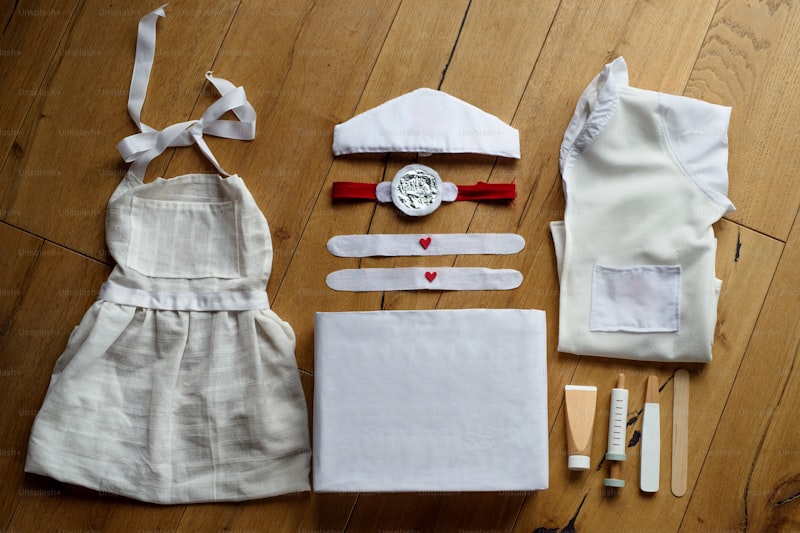Crafting a Realistic Dress Budget: Your Ultimate Guide to Stylish Spending
Introduction
When it comes to shopping for the perfect dress, whether for a wedding, a formal event, or simply to refresh your wardrobe, it's essential to have a budget in mind. Crafting a realistic dress budget not only helps you avoid overspending but also ensures that you find the right piece that fits your style and financial plan. In this article, we'll explore practical tips and strategies for creating a dress budget, the factors to consider when setting your limits, and how you can save money while still looking fabulous.
Understanding Your Fashion Needs
The first step in crafting a realistic dress budget is understanding your fashion needs. Consider the occasions for which you need dresses, your personal style, and how often you wear dresses. To aid in this process, ask yourself the following questions:
- What formal events do I have coming up?
- How often do I wear dresses in my daily life?
- What styles do I feel most comfortable in?
Calculating Your Dress Budget
Once you have a clear understanding of your fashion needs, it's time to calculate your dress budget. Here are the steps to take:
- Assess Your Income: Begin by evaluating your monthly income and current expenses.
- Set Aside a Dress Fund: Determine a fixed amount you can set aside each month for dress-related purchases.
- Create Categories: Break down your budget into categories such as casual dresses, formal wear, and special occasion outfits.
- Research Price Ranges: Understand the price ranges of the styles you want. This will help you set practical expectations.
| Budget Category | Example Amount |
| Casual Dresses | $50 - $150 |
| Formal Wear | $100 - $300 |
| Special Occasions | $150 - $500 |
Factors to Consider When Crafting Your Budget
To effectively create your dress budget, consider the following factors:
Quality vs. Quantity
It’s always tempting to buy multiple inexpensive dresses; however, investing in a few high-quality pieces can provide greater value over time. Higher-quality dresses often last longer and can be worn to various occasions.
Seasonal Trends
Fashion changes rapidly with each season. Be mindful of what’s currently in style, as seasonal trends can influence the prices of dresses.
Sales and Discounts
Look out for seasonal sales, clearance events, and online discounts. Signing up for newsletters from your favorite retailers can also give you insider access to special promotions.
Saving Tips for Your Dress Budget
Here are some effective ways to save money while dressing stylishly:
Thrift Stores and Consignment Shops
Don’t overlook thrift stores and consignment shops as they can be treasure troves for unique, high-quality dresses at a fraction of the retail price.
DIY and Upcycling
Consider customizing or upcycling older dresses. With a little creativity, you can transform a simple dress into something extraordinary.
Renting Dresses
If you have a special occasion but don't want to splurge on a dress you’ll only wear once, consider renting. Many online platforms offer stunning dresses for rent at a fraction of the purchase price.

Keep Track of Your Spending
Finally, to ensure that you stick to your budget, it's crucial to keep track of your spending. Use budgeting apps or simple spreadsheets to monitor your purchases and see how much you have left in your dress fund for the month.
Reviewing and Adjusting Your Budget
It’s important to continually assess your budget based on your changing fashion needs, income, or other financial commitments. Be flexible and willing to make adjustments as necessary.
Conclusion
Crafting a realistic dress budget is an empowering step towards making informed purchasing decisions while maintaining your personal style. By understanding your needs, calculating your budget, and exploring ways to save, you can enjoy shopping for dresses without financial stress. Remember to keep track of your expenses and remain flexible with your budget as your style and needs evolve. Following these guidelines will help ensure that you get the most out of every dollar spent, making your dress collection a reflection of both your taste and financial savvy.
Key Takeaways: Always assess your income and set aside a specific amount for dress purchases. Research the price ranges of your desired styles, and don’t hesitate to explore thrift shopping, renting, and DIY options. Lastly, keep track of your expenditures and adjust your budget as necessary for a satisfying and stylish shopping experience.